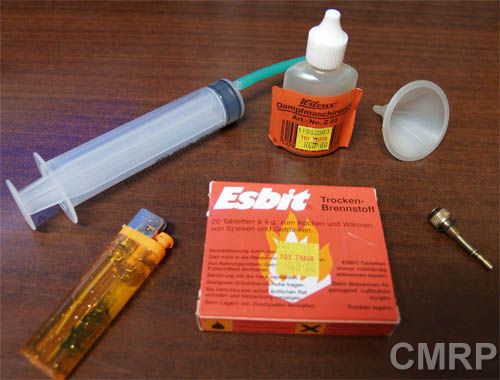
STEAM ENGINES
September 2006
RUNNING MODEL STEAM ENGINES
In
this day and age of
Ultra fast intelligent electronics and Hybrid fuel cell technology, the
technology that powered the industrial revolution just does not seem to feature
anymore.
I was reading through a
few “Popular Mechanics” magazines a while ago dated from the early Fifties.
I read through the letters section and was struck by the questions being sent in
to the editor. One chap was enquiring the working pressure he would expect from
a boiler he was making for an O gauge steam train he was busy with. Another
person wanted to know of a practical way to implement a magnetic lock release on
a security gate.
Open up a modern popular
mechanics and the word “steam” won’t appear unless you are talking about a
steam turbine in a modern nuclear powered warship!
Aside from the kettle in
the kitchen, how many modern kids actually come across working steam in their
daily lives? I decided to write an article on running a model steam engine, just
to maybe strike an interest in a young engineer and to start experimenting, or
to get one of the older steam engine owners to actually haul one out their
display cabinet and fire one up!
I decided to fire up one
of my Meccano SP3 engines.
It’s very simple
really, all you need is water, lubrication and fuel.
Water :
When
I run my engines, I like to use distilled or Reverse Osmosis (RO) water. The
reason is that when you are running the engine, the water is boiled away into
steam and the impurities in the water remain behind. You get a scale build-up
lining the boiler and steam lines causing heat transfer inefficiencies and
blockages in the system. At the scale we are operating at and the infrequency at
which we run our models, it is not a huge concern, but was a big headache of the
live steam loco operators of ages past!
- Distilled water is
water that has been steamed and condensed to remove all impurities, leaving pure
water behind. Distilled water can be obtained easily at all hardware and motor
spare shops and is used to replenish water in car batteries.
- RO water is water that has been forced under
pressure through a membrane. The membrane is fine enough to only allow H2O
through and all impurities are trapped behind. Depending on the quality and
maintenance of your system, almost 100% pure water can be obtained
Lubrication :
Do NOT USE :
- Thin oils like sewing machine oil. The water washes it away quickly and causes premature wear.
- Normal grease melts and degenerates into vegetable components that gums up pretty quickly, offering no lubrication.
USE :
- Use motor car engine oil on moving parts. S.A.E 20/30 is recommended. Some advocates claim that the additives in the modern motor oils will cause clogging, but in such a basic engine this is not an issue.
- I use special steam oil supplied by Wilesco formulated to resist being washed away by the steam.
- Steam oil used to lubricate real running steam locomotives is commercially available, but on enquiry I was informed it is supplied in 100Litre drums!
Fuel :
Methalated spirits or solid fuel?
- Meths (denatured alcohol) is the easiest to obtain for use in the tray, but messier to use and has a more irregular burn. It may burn intensely at first, with flames licking out the sides and up the boiler, then settle down eventually to a regular burn. The trick is to bet the tray sponge wet, but not flooded.
- Solid fuel tablets (Esbit and others) will give a more predictable burn and are both cleaner and easier to use - even on a gauze burner.
Place a few on the tray and light. They generally take a few minutes before giving a more of less constant burn, until they die down quickly once spent. Solid fuel tablets occasionally do leave a sticky brown residue on the boiler after a few runs, nothing too difficult to remove with a light cleaning.
- Mothballs (naphthalene). I would highly recommend NOT using them. This "dirty" form of naphthalene will soot up boilers - never mind the health hazard. My brother Anthony and I ran many a steam engine with mothballs in our childhood and I shudder to think of the long term health effects now!
Step 1.
Inspect the engine for
any signs of unusual wear or damage.
-Check that the boiler
is in good condition and that none of the boiler end seams are cracked or split.
-Make sure that all
steam pipes have a solid connection into the boiler and steam block.
-Check the state of all
O-rings on the overflow, steam whistle, safety valve and fill plugs.
-Of great importance is to remove the safety valve and make sure that it is free to move and the spring and O-rings are in good condition.

A few of the required items.
Step 2.
Lubricate the piston and all moving surfaces.
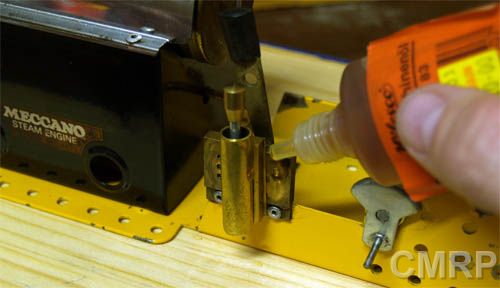
Step 3.
Heat up the water in the
microwave before beginning. This saves time and fuel and it is a pointless
exercise to bring the water to boil from cold using your fuel.
Step 4.
Pour the water into the
boiler. Try to aim to get the boiler about 3/4 full. Too full and the boiling
water will force into the steam pipe causing spitting at the piston. Hot water
and oil spits everywhere, as well as the run being a bit lumpy at first.
I don’t like to run my boiler water down to less than 1/4 as you run the risk of heating your solder joints on your boiler ends and steam pipe joins resulting in the subsequent hassle of having to do repairs.
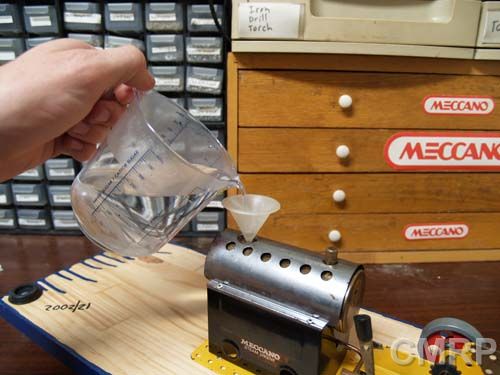
Step 5.
Add the fuel to the tray and light it while it is in place, especially when using meths. Use a match and use the breather holes on the side of the flue to light the fuel.
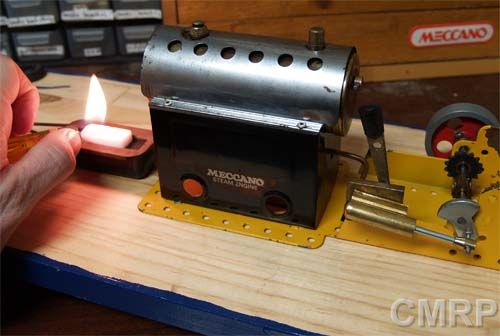
I
should listen to my own advice!
Step 6.
If you pre-heated your
water, it should only take a few minutes for steam to come up and the fun
begins! Give the flywheel a few turns to help get things going and sit back to
admire the marvel of steam.
If you have a steam
whistle fitted to your engine, you can use it to control the rate of speed by
blowing of a little bit of steam from time to time. I also use a long
screwdriver to crack open the safely valve slightly from time to time if you
don’t have a steam whistle. Once the fuel reaches a steady rate of burn the
engine will settled down to a steady run.
If it seems to be
running too fast all the time, experiment with adding less fuel on the next run.
Make sure to check your water each time you add new fuel.
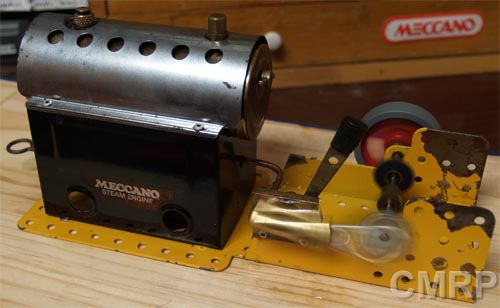
She's a good runner!
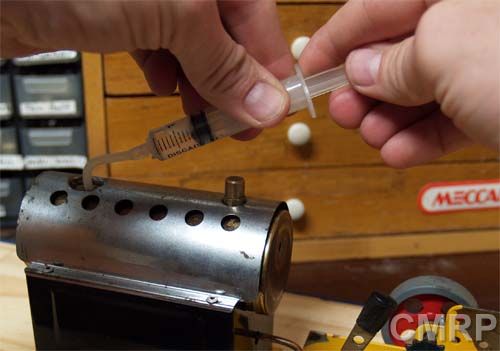
To remove all the water without tipping the engine, use a syringe and a length of silicone tubing.
This is particularly relevant when mounted on a model.